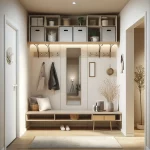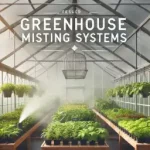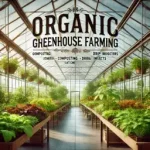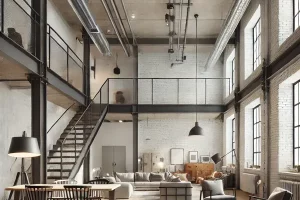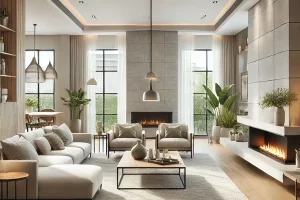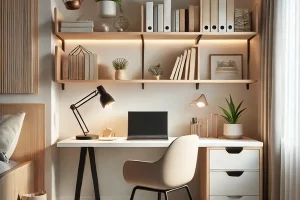Best greenhouse for your backyard: If you are an avid gardener, consider investing in a greenhouse to extend your growing season and protect your plants from harsh weather conditions. However, with so many different types of conservatories available on the market, choosing the best one for your needs can take time and effort. This article will guide you through selecting the best greenhouse for your backyard, including factors to consider, the types of greenhouses available, and how to maintain your greenhouse.
Best Greenhouse for Your Backyard: Factors to Consider
Before purchasing a greenhouse, you should consider the following factors:
-
Size and Space
The first thing you need to consider is the size of your greenhouse. The size will depend on the space available in your backyard and how many plants you plan to grow. Choose a greenhouse that will fit comfortably in your backyard without taking up too much space.
-
Climate and Weather
The climate and weather in your area will also affect your greenhouse choice. If you live in a region with a harsh winter, you may need a greenhouse with thicker walls or insulation to protect your plants from the cold. On the other hand, if you live in a warm, sunny region, you may need a greenhouse with adequate ventilation to prevent your plants from overheating.
-
Material
Greenhouses are made from various materials, such as wood, aluminum, and PVC. Each material has its advantages and disadvantages. Wooden greenhouses are sturdy and aesthetically pleasing but require more maintenance than other materials. Aluminum greenhouses are durable, lightweight, and easy to assemble but may not provide adequate insulation. PVC greenhouses are inexpensive and easy to complete but may not be as stable as other materials.
-
Cost
The cost of a greenhouse can vary significantly depending on the size, material, and features. Set a budget before shopping for a greenhouse to avoid overspending.
Types of Greenhouses
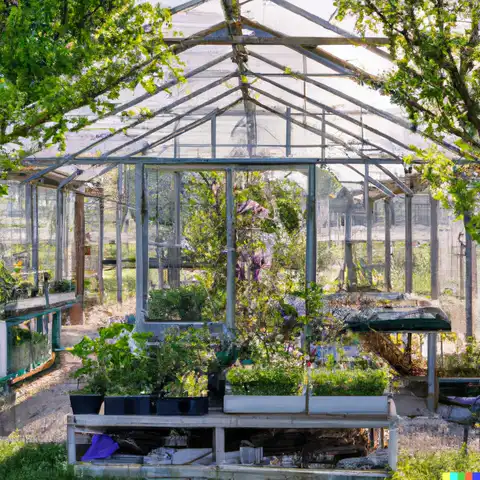
Once you have considered the above factors, you can choose the type of greenhouse that best suits your needs. The most common types of greenhouses are:
-
Lean-to Greenhouses
Lean-to greenhouses are attached to an existing structure, such as a house or garage. They are ideal for small backyards or for gardeners who have limited space.
-
Freestanding Greenhouses
Freestanding greenhouses are standalone structures that can be placed anywhere in your backyard. They are available in various sizes and shapes, making them suitable for all types of gardens.
-
Miniature Greenhouses
Miniature greenhouses, known as cold frames, are small structures that protect plants from freezing temperatures and harsh weather conditions. They are ideal for gardeners with limited space and want to extend their growing season.
-
Portable Greenhouses
Portable greenhouses are lightweight structures that can move around your backyard. They are easy to assemble and disassemble, making them ideal for gardeners who want a temporary greenhouse.
Maintaining Your Greenhouse
Once you have chosen and installed your greenhouse, you must maintain it to ensure your plants thrive. Here are some maintenance tips:
-
Cleaning
Regularly clean your greenhouse to remove dirt and debris clogging ventilation systems and inhibiting plant growth.
-
Ventilation
Proper ventilation is crucial for your greenhouse’s success—open windows and doors to regulate the temperature and prevent mold and mildew growth.
-
Watering
Water your plants regularly to prevent them from drying out. Consider installing a drip irrigation system to make watering easier.
-
Pest Control
Pests can be a significant problem in greenhouses. Regularly inspect your plants and remove infected leaves or stems to prevent infestations. You can also use organic pest control methods such as introducing beneficial insects or using natural pesticides.
-
Temperature Control
Maintaining the proper temperature is critical for your plants’ growth. Use a thermometer to monitor the temperature inside your greenhouse and adjust it as needed. You can also consider installing a heating or cooling system to regulate the temperature.
Conclusion
A greenhouse can significantly extend your growing season and protect your plants from harsh weather conditions. Consider the size, material, climate, and cost factors when choosing a greenhouse for your backyard. Several types of greenhouses are available, including lean-to, freestanding, miniature, and portable. To ensure your greenhouse’s success, remember to maintain it regularly by cleaning, ventilating, watering, controlling pests, and regulating the temperature.
FAQs About best greenhouse for your backyard
How much does a greenhouse cost?
The cost of a greenhouse can vary depending on the size, material, and features. A small, basic greenhouse can cost as little as a few hundred dollars, while a larger, more advanced greenhouse can cost several thousand dollars.
What is the best material for a greenhouse?
The best material for a greenhouse depends on your needs and preferences. Wooden greenhouses are sturdy and aesthetically pleasing but require more maintenance than other materials. Aluminum greenhouses are durable, lightweight, and easy to assemble but may not provide adequate insulation. PVC greenhouses are inexpensive and easy to complete but may not be as stable as other materials.
Do I need to regulate the temperature in my greenhouse?
Yes, regulating the temperature is critical for your plants’ growth. Use a thermometer to monitor the temperature inside your greenhouse and adjust it as needed. You can also consider installing a heating or cooling system to regulate the temperature.
How do I prevent pest infestations in my greenhouse?
Regularly inspect your plants and remove infected leaves or stems to prevent pest infestations. You can also use organic pest control methods such as introducing beneficial insects or using natural pesticides.
Can I use a greenhouse in a small backyard?
Several types of greenhouses are available, including lean-to and miniature greenhouses, suitable for small backyards. Choose a greenhouse that will fit comfortably in your backyard without taking up too much space.



